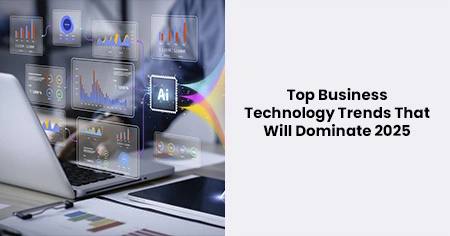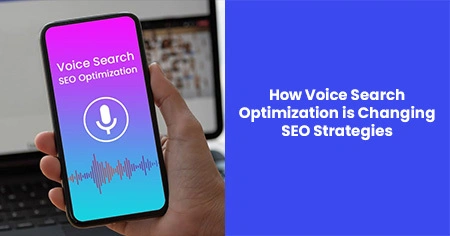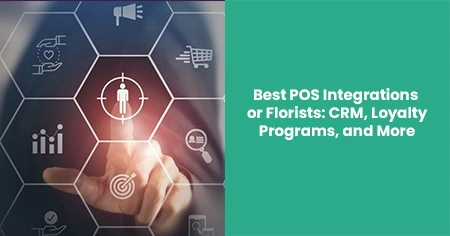The challenge? Selecting technologies that deliver the greatest value. But there’s no need to worry. In this article, we will uncover the top business technology trends that are predicted to rule 2025. We’ll cover everything from automated payroll systems to green tech and show you how to pick the trends that align with your business.
This article finds the most prevalent blunders to abstain from in opening a Shopify store and presents practical solutions to set your company up for long-term prosperity.
Let’s jump in!
What’s Accelerating Tech Adoption in Business
Businesses aren’t adopting the latest business technologies simply because it’s trendy. They’re doing it to address real-world challenges — such as increasing costs, security threats, and the need for remote work. Technology provides quick solutions and more efficient management tools for everything from payroll to customer service.
However, challenges aren’t the only reason behind this shift. Customers now expect faster service, customized experiences, and smoother online interactions. If that delivery is not in your business’ wheelhouse, your competitors will be more than happy to make it happen. Therefore, even though there are some tech trends that can be downplayed, embracing the right ones is now a must, not an option.
The Top Business Technology Trends
In 2025, certain tech trends are set to transform how businesses operate. From AI-powered assistance to sustainable practices, these innovations could make the work faster, safer, and cheaper. Here’s a closer look at the ones to watch.
AI-Powered Automation
Automation has revolutionized the way organizations function, allowing for repetitive tasks to be executed faster and with fewer errors. From processing invoices to managing schedules, these solutions free up your time so you can focus on what really matters—growing your business.
One of the most impactful uses is in streamlining administrative tasks. For example, take online payroll systems. Not only do these solutions automate payments. They also manage tax calculations, multi-state compliance, direct deposits, and electronic W-2 preparation. This reduces the risk of errors and saves you hours each month.
These solutions also help in decision-making by analyzing massive amounts of data quickly. This means you can respond to changes in the market much faster without having to second-guess every single move. However, as life-changing as this is, it’s crucial to rely on reputable providers for these tools.
Cloud Computing
Cloud computing is not new, but it is rapidly transforming. An increasing number of organizations are migrating to cloud-native applications to enable more flexibility and improve scalability. This shift is especially beneficial for B2B fintech financing and cloud computing in banking, where cloud-based platforms enhance transaction security, improve data accessibility, and enable real-time fraud detection. And why not? These services give you the opportunity to pay for just what you use — unlike most traditional software. They also help businesses be more profitable, regardless of their size.
Hybrid and multi-cloud strategies are also becoming common. They provide a means of balancing cost, performance, and security. Being able to access data remotely also lends itself to remote work models. This makes cloud computing a trend that’s here to stay.
Cybersecurity Measures
New technology brings with it a fair share of new threats. Today, cybersecurity is no longer merely firewalls and antivirus software. Enterprises now face ransomware, phishing attacks, and data breaches that wreak serious financial havoc on them.
The zero-trust model is gaining wider acceptance. This principle states that “never trust, always verify”: every user and device must be authenticated before being allowed access to the data.
To small businesses, cybersecurity might be very costly, but the expenses that arise from a data breach are certainly going to be many times more expensive. The price that you invest in guarding customer information and your business reputation is worth every penny.
Remote Work Tech
The trend toward remote work is not going away. In fact, it’s all set to grow and make remote work technologies an enterprise need. So businesses need trusted solutions that help to keep teams connected — from video conferencing to project management tools.
Team management is one of the aspects in which this tech excels. Remote-friendly tools make things like time tracking and performance reviews easier. The integration of these tools can help keep employees' attention—no matter how physically distant they may be.
Clear communication and performance-tracking tools also help build trust in remote teams. This makes it easier to manage projects and productivity.
Sustainability and Green Tech
Consumers are getting more and more eco-conscious, and businesses have begun to take notice. This is why green technology is gaining ground. It is not only for the sake of reduced carbon footprints but also for cutting costs. Examples include energy-efficient servers, AI for resource management, and sustainable packaging.
Green tech also can help lift your brand image. People tend to appreciate businesses that focus on the planet. And thanks to an increase in global regulations aimed toward sustainability, going green may soon stop being a choice and become an obligation.
Blockchain for Business
Blockchain for business is no longer about cryptocurrency. Companies are using it for secure transactions, smart contracts, and supply chain transparency. Because of its decentralized nature, your data cannot be changed without others noticing.
This is perfect for financial services and logistics. Blockchain might offer more efficient cross-border payments and lessen costs and delays. Also, as data privacy regulations increase in strictness, blockchain applications for secure data management help businesses comply easily.
5G Technology
The rollout of 5G networks is set to revolutionize how businesses operate. These allow for quicker data transmission and less latency. It’s particularly valuable for industries such as retail, healthcare, and logistics, where speed and precision can win or lose customer satisfaction.
For instance, 5G can enhance IoT devices to constantly share data. That means factories can address problems before they lead to delays, and delivery firms can follow shipments every second of the way.
IoT (Internet of Things)
The IoT are devices that connect to the internet, given their ability to send and receive data. Businesses experience great impacts of IoT in many areas. This can be inventory control and maintenance forecasting, as well as in arriving at decisions as to how consumers behave.
For example, in shop-floor enterprises, if there are smart sensors in adequate volumes. The areas will be signaled as far as their stock levels are concerned and their alerts restored when they become low. Alternatively, IoT systems will offer phenomenal insights into manufacturing by predicting equipment failures in advance, thereby shielding downtime in pipeworks and lowering their maintenance costs.
Augmented Reality (AR) and Virtual Reality (VR)
AR and VR are no longer just for gaming. Companies use this to enhance customer experience and improve training purposes. For instance, retailers use AR to let their customers virtually try products on before buying. Similarly, real estate companies give people looking to purchase properties access to VR tours.
VR Simulations can train them on complicated machinery within manufacturing without any risks being involved. 5G really comes in to boost AR and VR accessibility with low latency and quality streaming. Investing in the tools can give you a competitive edge by providing immersive experiences for the customer.
How to Incorporate These Technologies into Your Business
One of the most difficult feats behind keeping up with the latest technology trends is their actual implementation. Here are practical steps to help blend these latest technologies into the organization without overwhelming your resources.
Assess Your Current Tech Stack
Start by reviewing the tools your business already uses. A simple check-up can display if something is working or something isn't working well. For example, check if your payrolls are processed too slowly. If so, it might be time to switch to an automated solution that handles tasks faster. Or is the team weak in their communications? Then, specific tools for video calls and messaging may well be a better investment.
Doing a tech audit shows you the gaps that need to be filled without wasting money on things you don’t need. Focus on tools that solve your biggest problems first. This way, you invest in technology that makes a real difference instead of just following the latest trends.
Prioritize Compliance and Security
Adopting new technologies is exciting. However, it is equally important to understand that security and compliance threats may come along with any new technologies. Data breaches do not only cost money. They can harm a corporation's reputation and, therefore, erode customer confidence.
Thus, it's critical that you stamp out the selection process for new tools with security and compliance. To any tool you choose, ensure that it adheres to the regulations laid down by the GDPR and other data privacy laws.
Partner with Experts
Collaboration with specialists can make implementation less complicated, especially when working with spheres such as AI and cloud computing. Managed service providers make it easy by taking care of everything from security to compliance. Thus, all one has to do is mind the business.
Choosing the right partners is fundamental; they should have fair proof of experience in your industry. Investing in this expertise could be costly. But it often saves money in the long run.
Start Small
There is no need to switch your entire tech stack overnight. Very often, starting small is the smartest way to go. Focus on one or two tools that make the most difference right away. If communication is troublesome, simply start with a project management tool.
Testing new tools on a small scale reduces risk and helps you measure ROI before making bigger investments. In time, as you feel comfortable, you can begin to expand. Integrate more technologies that align closely with your business goals.
Final Thoughts
Technology is increasing at a colossal pace, and your business, too, should keep up that intensity. These trends, like the AI-driven automation and sustainability efforts, are not only about taking the lead. However, they also give the user a practical, functional, and easy solution to real business problems.








